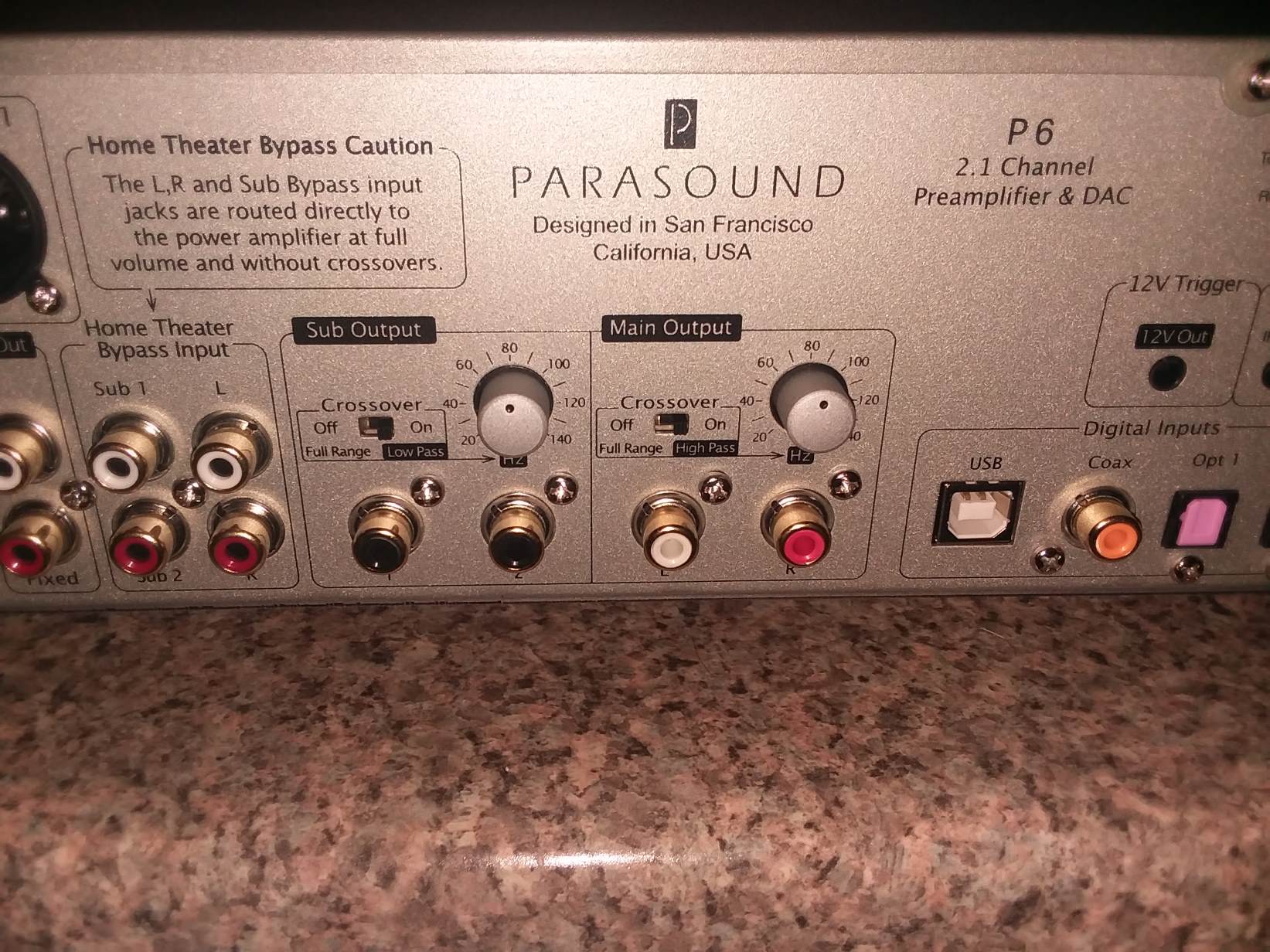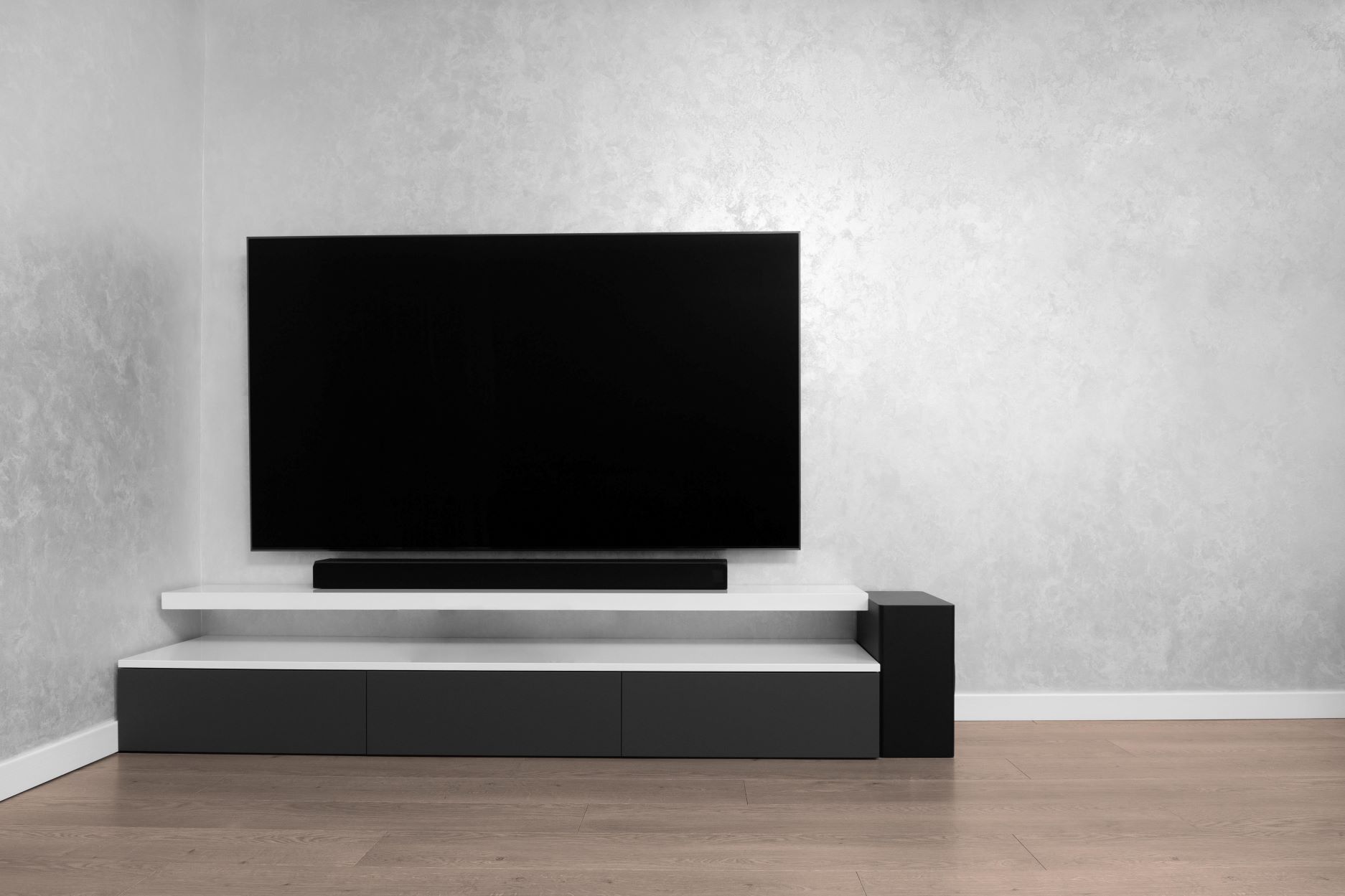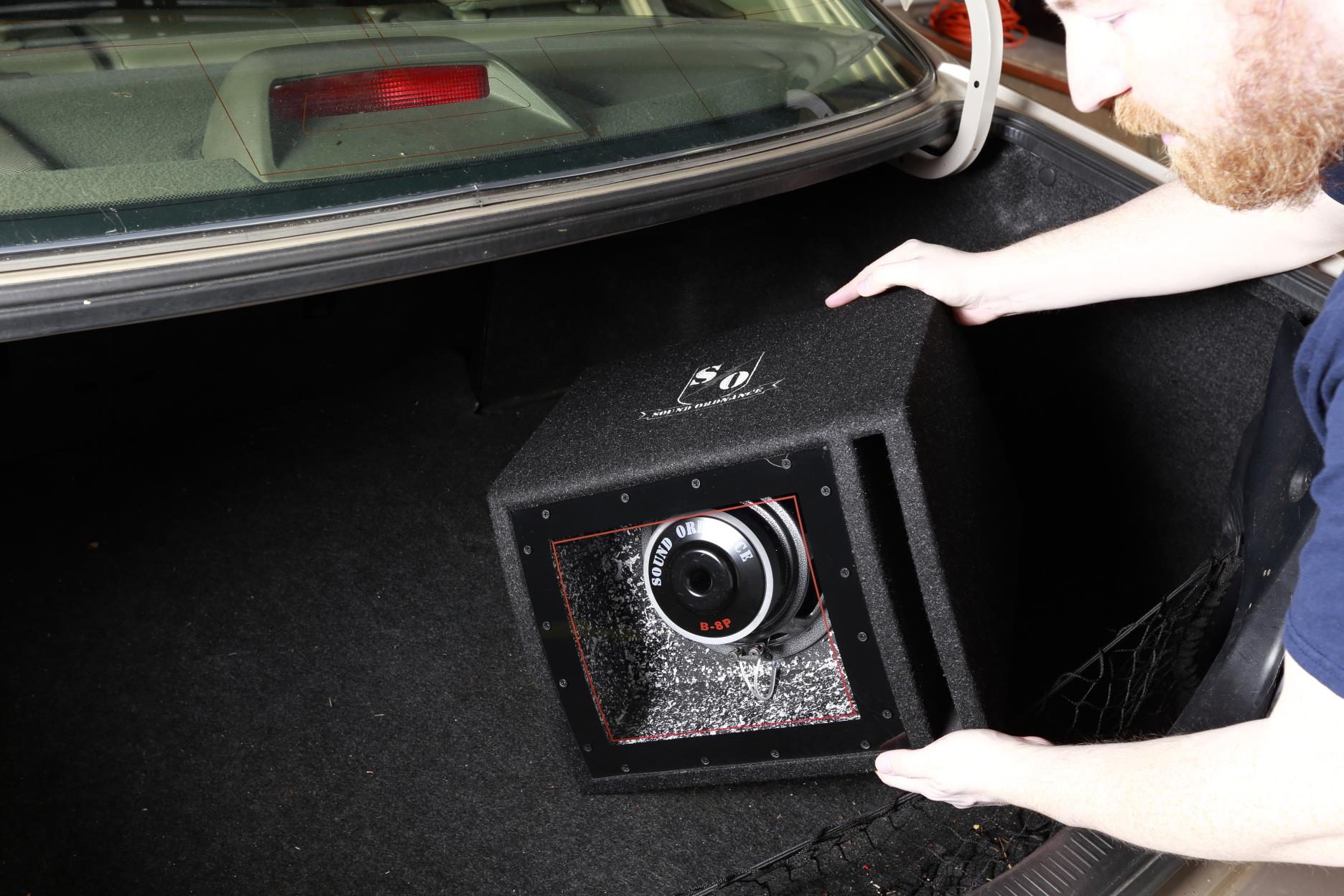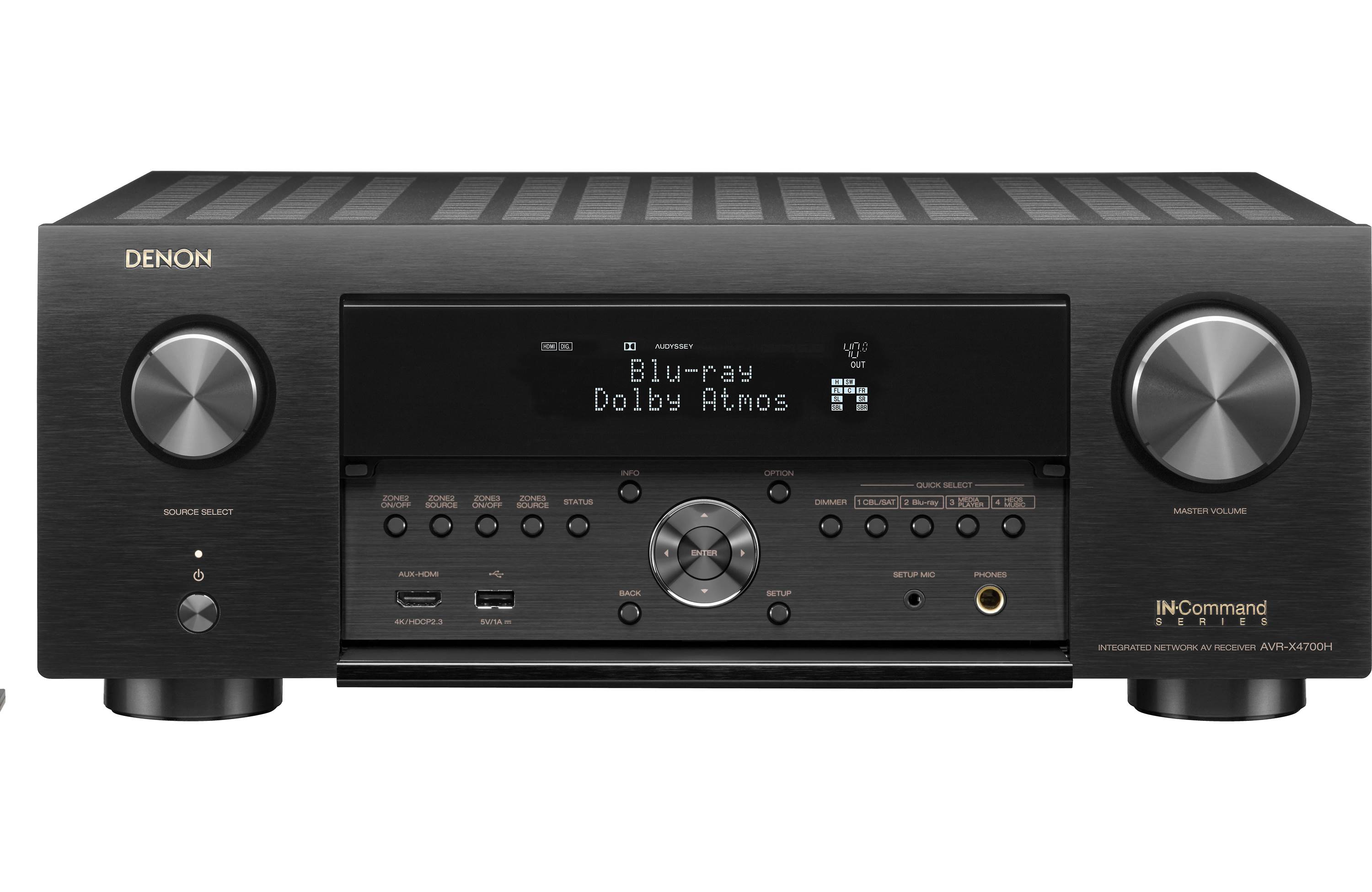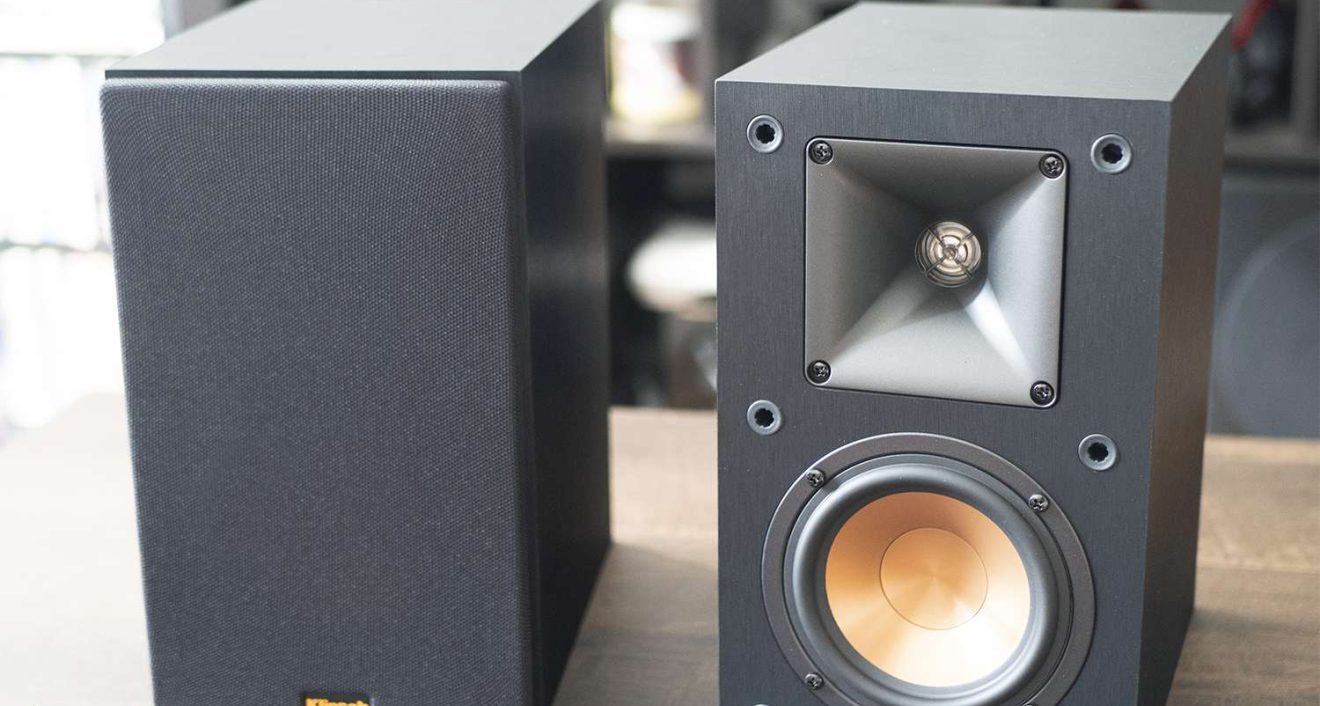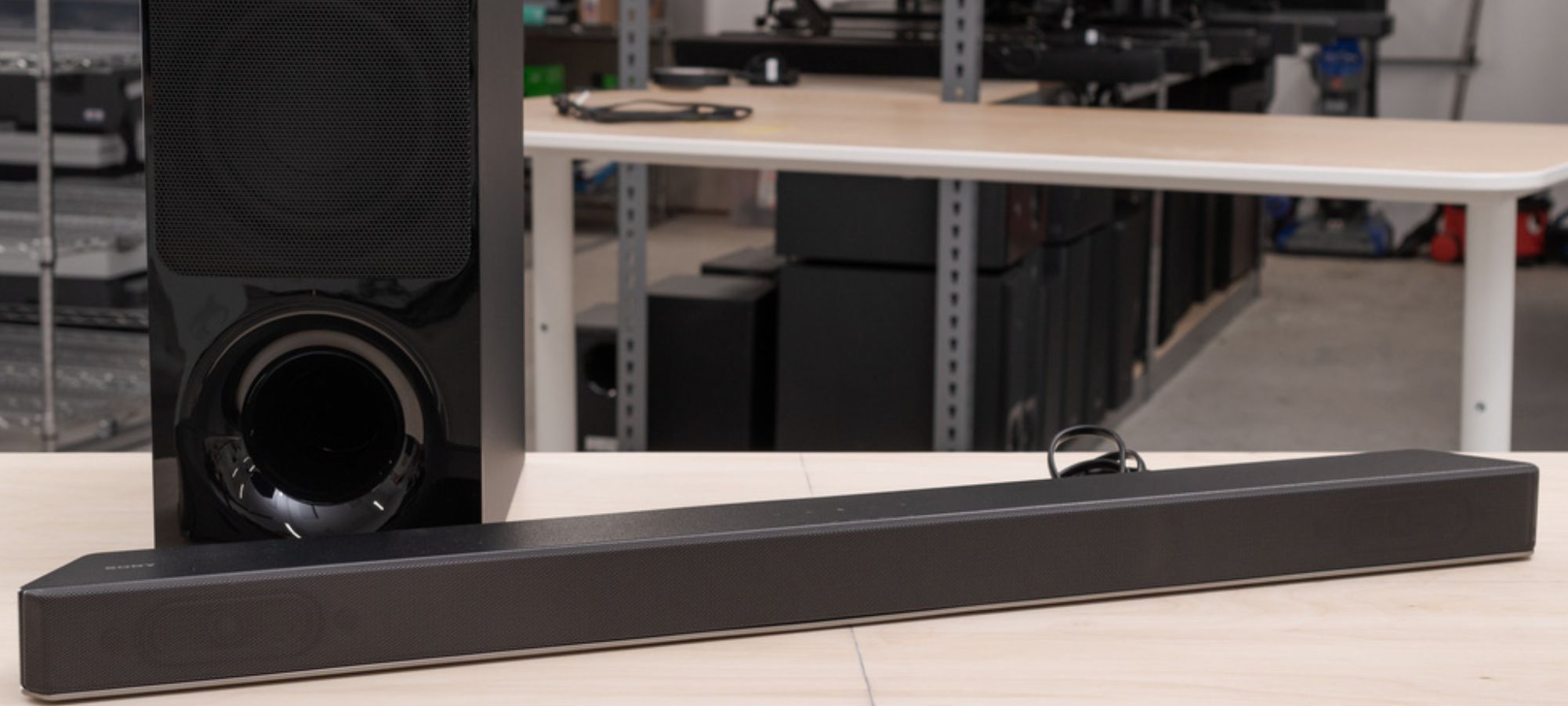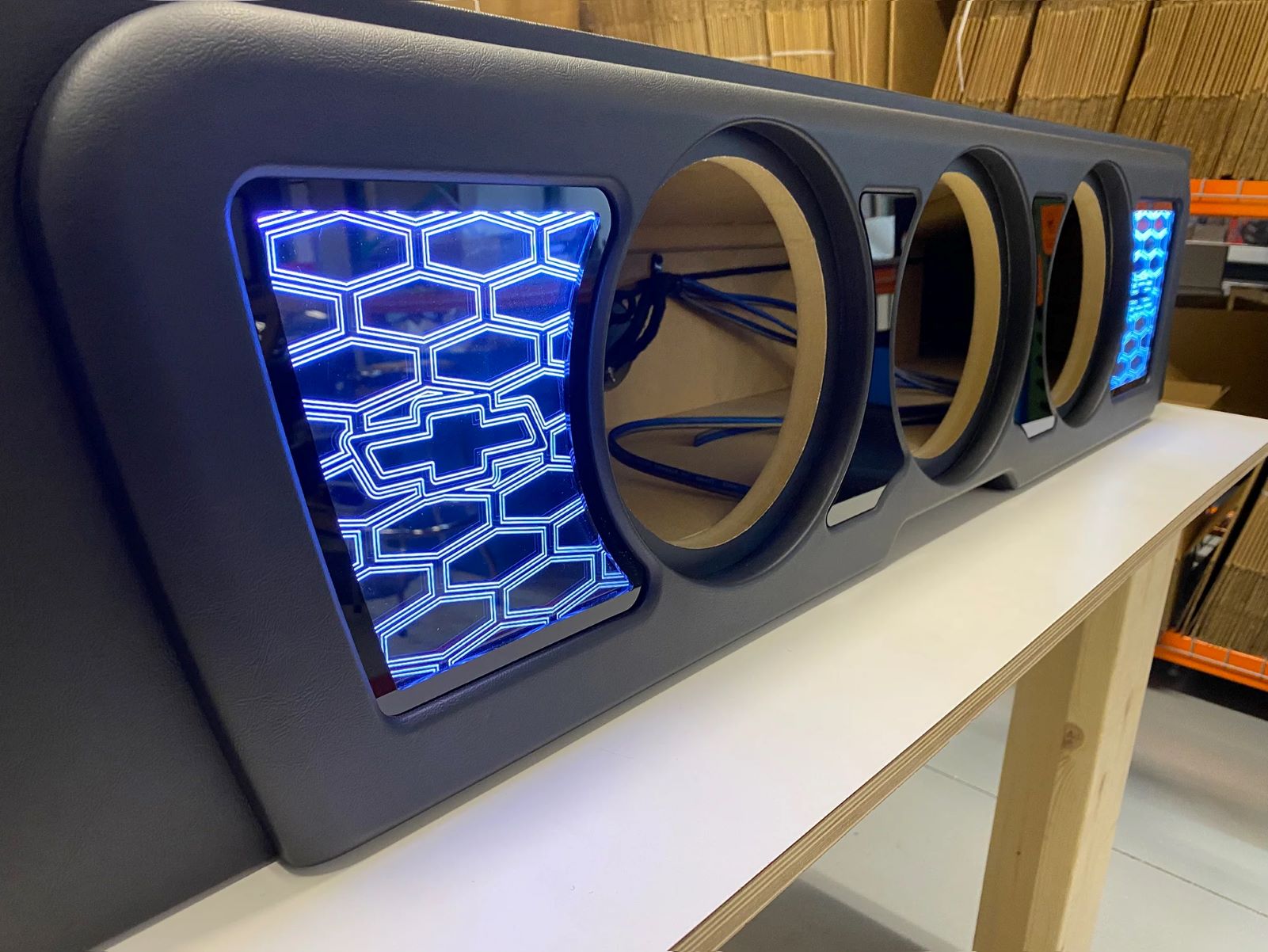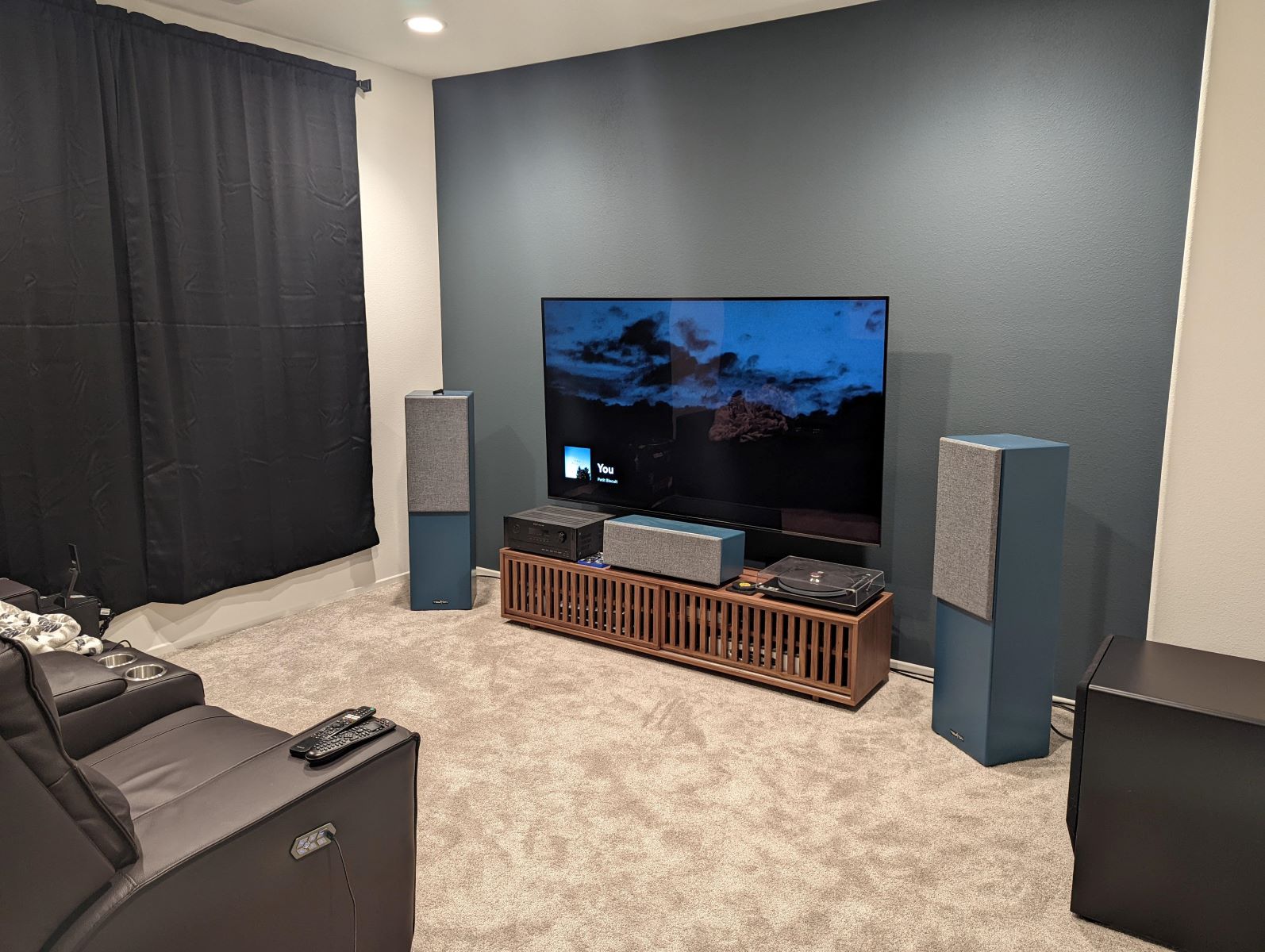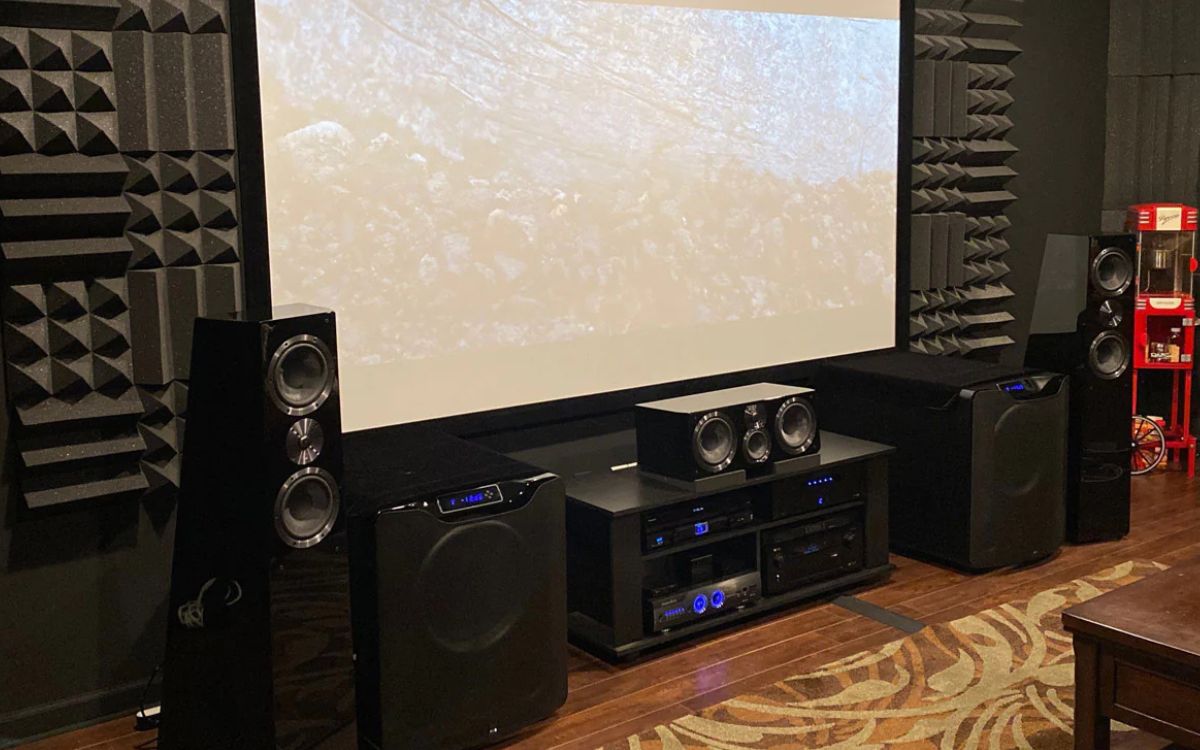Home>Devices & Equipment>Subwoofer>Where To Place A Subwoofer
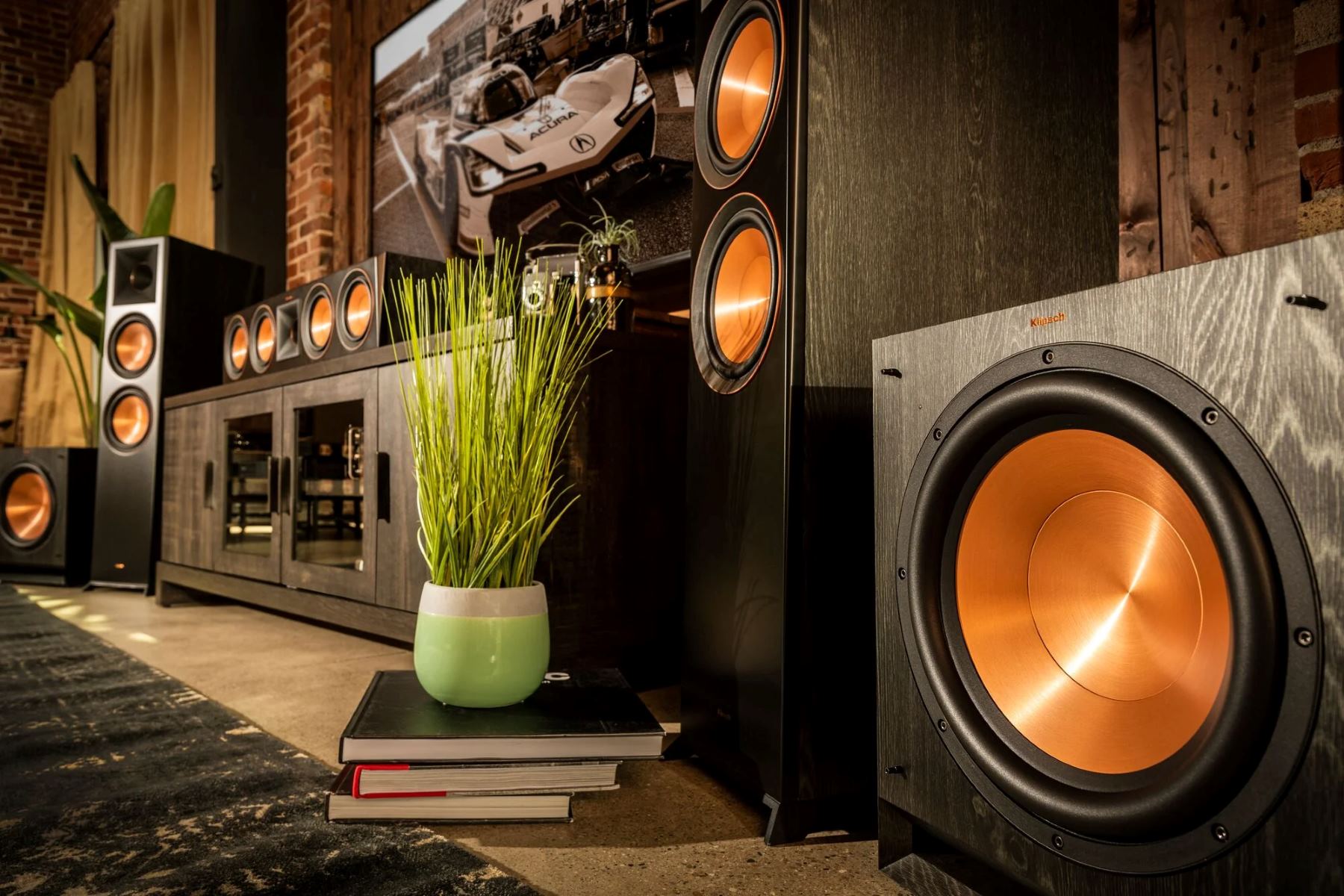

Subwoofer
Where To Place A Subwoofer
Modified: February 18, 2024
Discover the best placement for your subwoofer to enhance your audio experience. Find out the optimal position and setup for maximum bass impact and clarity.
(Many of the links in this article redirect to a specific reviewed product. Your purchase of these products through affiliate links helps to generate commission for AudioLover.com, at no extra cost. Learn more)
Table of Contents
Introduction
When it comes to creating a truly immersive audio experience, the right placement of a subwoofer is key. A subwoofer is a specialized speaker designed to reproduce low-frequency sounds. It adds depth and richness to your audio, enhancing the overall impact of movies, music, and games.
However, figuring out where to place a subwoofer can be a challenge. The location of your subwoofer can greatly affect its performance and the overall sound quality in your room. In this article, we will explore the factors to consider when placing a subwoofer and provide you with various placement options to help you achieve optimal audio performance in your home.
Whether you are a home theater enthusiast or an audiophile looking to elevate your sound experience, finding the ideal placement for your subwoofer is crucial. By strategically positioning your subwoofer, you can ensure that every deep bass rumble and thumping beat are felt throughout your space.
Throughout this article, we will discuss the different placement options for subwoofers, taking into account room size, furniture arrangement, and acoustic considerations. We will also provide you with some useful tips to optimize your subwoofer placement for the best audio experience possible.
So, if you’re ready to take your audio system to the next level, let’s dive into the world of subwoofer placement and unlock the true potential of your sound system.
Factors to Consider When Placing a Subwoofer
When it comes to placing a subwoofer, there are several important factors to consider. These factors will help ensure that you get the most out of your subwoofer and achieve optimal sound performance.
Room Acoustics: The acoustic properties of your room play a significant role in subwoofer placement. The size and shape of the room, as well as the type of flooring, wall materials, and furniture, can all impact how sound waves travel and interact with the space. Understanding the acoustics of your room will help you determine the best placement for your subwoofer.
Speaker Compatibility: Consider the compatibility of your subwoofer with your other speakers. Ensure that the subwoofer’s frequency response range complements the main speakers. This will help create a seamless and balanced soundstage.
Listening Position: Take into account the location of your primary listening position when placing the subwoofer. The subwoofer should be positioned to deliver an even distribution of bass throughout the listening area, ensuring that everyone can enjoy a consistent audio experience.
Physical Space: Evaluate the available physical space in your room. Take note of any obstacles, such as furniture, walls, or doors, which may impact the placement options for your subwoofer. Find a location that allows for optimal placement without obstructing the sound or creating audio reflections.
Bass Response: Experiment with different positions to determine the best bass response in your room. Subwoofers interact with room boundaries, such as walls and corners, which can affect the bass output. Understanding these interactions will help you find the best placement for maximum bass impact.
Personal Preference: Ultimately, personal preference plays a role in subwoofer placement. Different individuals have different preferences when it comes to bass reproduction. Some may prefer a more pronounced thump, while others may prefer a more balanced and subtle bass. Experimentation will help you find the sweet spot that suits your personal taste.
Take these factors into consideration when positioning your subwoofer. By understanding and addressing these elements, you can make informed decisions about where to place your subwoofer for optimal sound quality and a truly immersive audio experience.
Placement Options for Subwoofers
There are several placement options for subwoofers, each with its own advantages and considerations. Let’s explore some of the most common placement options to help you determine the best location for your subwoofer:
- Corner Placement: Placing the subwoofer in a corner of the room is a popular choice. Corner placement can enhance bass performance by capitalizing on the room’s natural resonance. This position allows for increased coupling with the room boundaries, leading to a more powerful and immersive bass experience. However, be cautious not to place the subwoofer too close to the corner, as it may result in boomy or uneven bass response.
- Front or Center Placement: Placing the subwoofer near the front or center of the room can provide a balanced and consistent bass response. This position helps create a cohesive soundstage with the main speakers, ensuring that all frequencies blend seamlessly. However, it may require some experimentation to find the optimal placement that minimizes any localization of the subwoofer.
- Side Placement: Positioning the subwoofer along the side walls can offer an alternative placement option. This position can help distribute bass energy more evenly throughout the room, especially in larger spaces. It can also minimize the effects of room modes and standing waves. However, be mindful of any potential obstructions or furniture that may impact the subwoofer’s performance.
- Rear Placement: Placing the subwoofer near the rear of the room can create a unique bass experience, especially in home theater setups. This rear placement can enhance the sense of envelopment and provide a more immersive surround sound experience. However, it is crucial to carefully integrate the subwoofer with the rest of the speakers to ensure a seamless blend between the rear and front soundstage.
These are just a few examples of subwoofer placement options. The best placement for your subwoofer will depend on various factors such as room size, acoustic properties, furniture arrangement, and personal preference. Consider experimenting with different positions to find the placement that delivers the most satisfying and immersive bass experience in your specific environment.
Corner Placement
Corner placement is a popular choice for subwoofer positioning. It takes advantage of the room’s natural acoustic properties, allowing the subwoofer to interact with the surrounding walls and create a more robust and powerful bass response.
When placing the subwoofer in a corner, the proximity to the walls reinforces the low-frequency sound waves, resulting in increased bass output. This corner loading effect can enhance the overall impact and depth of the bass, making it particularly appealing for movie enthusiasts and music lovers who crave a visceral and hard-hitting bass experience.
However, it’s important to note that corner placement can sometimes lead to excessive bass buildup and uneven frequency response, commonly known as “boomy” bass. This can be especially noticeable if the subwoofer is positioned too close to the corner or if the room dimensions are not suitable for corner placement.
To mitigate these issues, experimentation is essential. Start by placing your subwoofer in different corners of the room, taking note of the bass response at each location. You may find that the bass is more balanced and controlled in one corner compared to another. Adjusting the subwoofer’s position within the corner can also help fine-tune the bass response.
In addition, consider using room treatments such as bass traps or acoustic panels to address any excessive bass buildup. These treatments can help absorb or diffuse the low-frequency energy, resulting in a smoother and more even bass response.
Corner placement can be particularly advantageous for smaller rooms where space is limited. Placing the subwoofer in a corner allows for better optimization of available space without interfering with the placement of furniture and other audio equipment.
Remember that finding the optimal corner placement for your subwoofer may require some trial and error. Take the time to experiment and listen carefully to the bass response from different positions. By fine-tuning the corner placement, you can achieve a well-balanced and impactful bass that complements your audio system and immerses you in your favorite movies and music.
Front or Center Placement
Front or center placement is another common option for subwoofer positioning. Placing the subwoofer near the front or center of the room offers several advantages, particularly in terms of balance and integration with the main speakers.
When the subwoofer is positioned at the front or center of the room, it helps create a cohesive and unified soundstage. The bass frequencies blend seamlessly with the rest of the audio, ensuring that all frequencies are reproduced accurately and that the sound remains balanced throughout the listening area.
This placement option is particularly effective for music enthusiasts who prioritize accurate and natural audio reproduction. By positioning the subwoofer in close proximity to the main speakers, it allows for a more coherent and realistic sonic experience that faithfully represents the original intent of the audio recordings.
When opting for front or center placement, it’s essential to consider the interaction between the subwoofer and the main speakers. Pay attention to the crossover frequency settings and ensure that the subwoofer’s frequency response complements that of the main speakers. This will help avoid any frequency gaps or overlaps that could disrupt the overall sound balance.
While front or center placement offers numerous benefits, it’s important to note that speakers, including subwoofers, can produce localization effects. Placing the subwoofer too close to the listening area may result in the bass being easily identifiable, breaking the illusion of a cohesive soundstage. Experimentation with positioning and levels can help minimize any noticeable localization of the subwoofer.
If you have a dedicated home theater room, front placement can be particularly effective in complementing the surround sound speakers. The subwoofer’s position near the front of the room allows for a seamless blend between the front and rear soundstage, creating a more immersive and enveloping audio experience.
Whether you choose front or center placement, ensure that the subwoofer is positioned in a way that doesn’t obstruct the sound or create reflections. Keep in mind the room’s acoustics, furniture placement, and the listening position to achieve the best possible audio performance.
Overall, front or center placement is a versatile option offering a balanced and integrated bass response. It allows for a more natural and accurate audio reproduction, allowing you to enjoy your favorite movies, music, and games with enhanced depth and impact.
Side Placement
Side placement is an alternative option for subwoofer positioning that can provide unique advantages in certain room setups. Placing the subwoofer along the side walls can help distribute bass energy more evenly throughout the room, especially in larger spaces.
One of the benefits of side placement is the potential reduction of room modes and standing waves. In larger rooms, low-frequency energy can accumulate in specific areas, resulting in uneven bass response. By placing the subwoofer along the side walls, you can minimize these issues and achieve a more balanced and uniform bass distribution.
Another advantage of side placement is that it avoids the potential localization effects that can occur with front placement. Placing the subwoofer on the side walls can help create a more diffuse and enveloping bass experience, enhancing the sense of immersion in movies and music.
When considering side placement, it is important to take into account the room layout and any potential obstructions that may affect the subwoofer’s performance. Ensure that there is enough space between the subwoofer and any furniture or walls to allow for proper sound dispersion. Experiment with different positions along the side walls to find the optimal placement that delivers the desired bass response.
Side placement can be particularly effective in rooms where the main listening area is not centered or when there are multiple listening positions. By distributing the bass energy along the side walls, it can help ensure that everyone in the room enjoys a consistent and immersive audio experience.
However, it is important to note that side placement may not be suitable for all room sizes and layouts. In smaller rooms, side placement may result in excessive bass buildup and an overpowering low-end response. If you have a smaller room, it’s recommended to experiment with different placements or consider other options such as corner or front placement.
As with any subwoofer placement, it’s crucial to listen carefully and adjust settings as needed. Fine-tuning the position and levels of the subwoofer can help achieve the best possible bass performance in your specific room and enhance your overall audio experience.
Ultimately, side placement offers a versatile alternative that can improve bass distribution and create a more immersive sound experience. Consider this option when determining the ideal placement for your subwoofer, keeping in mind the room size, layout, and your personal preferences.
Rear Placement
Rear placement of a subwoofer refers to positioning the subwoofer near the back of the room. This placement option is commonly utilized in home theater setups to complement the surround sound speakers and create a more immersive audio experience.
One of the key advantages of rear placement is the ability to enhance the sense of envelopment and spaciousness in movies and other audio content. By positioning the subwoofer in the rear, it can interact with the surround sound speakers, allowing for a seamless blend between the front and rear soundstage. This creates a more immersive listening experience, with the low-frequency effects enveloping the viewer from all directions.
Rear placement can also help distribute bass energy more evenly throughout the room, especially in larger spaces. By positioning the subwoofer in the back, it can counterbalance any potential bass imbalances that may occur with front placement. This ensures a more uniform and balanced bass response, enhancing the overall audio performance.
When opting for rear placement, it’s crucial to carefully integrate the subwoofer with the rest of the speakers. Ensure that the subwoofer is properly calibrated and timed with the surround sound speakers to avoid any phase cancellation or synchronization issues. Fine-tuning the crossover settings and levels can help achieve a seamless blend between the rear and front soundstage.
It’s important to note that rear placement may not be suitable for all room sizes and layouts. In smaller rooms, rear placement may result in excessive bass buildup and overpowering low-frequency effects. It’s recommended to consider the size of your room and experiment with positioning options to find the right balance between rear placement and bass performance.
Additionally, be mindful of any potential obstructions or furniture in the back of the room that may interfere with the subwoofer’s performance. Ensure that the subwoofer has enough space and clearance to achieve optimal sound dispersion.
Rear placement is particularly effective for dedicated home theater rooms or for those seeking a more immersive surround sound experience. It can elevate your movie-watching experience, adding depth and impact to explosions, rumbling thunder, and other low-frequency effects.
Experimentation and careful calibration are key when considering rear placement. Take the time to fine-tune the subwoofer’s position, levels, and integration with the surround sound speakers. With the right setup, rear placement can provide a captivating and immersive audio experience that enhances your enjoyment of movies, TV shows, and other audio content.
Considerations for Different Room Sizes
When it comes to subwoofer placement, the size of your room plays a significant role in determining the optimal position for achieving the best sound performance. Here are some considerations to keep in mind for different room sizes:
Small Rooms: In smaller rooms, bass can easily accumulate and become overpowering if not properly managed. Considerations should be given to corner or front placement options, as these positions can help contain and control the bass energy. Experiment with different placements and monitor the bass response to avoid excessive boominess or muddiness in a small room.
Medium-Sized Rooms: Medium-sized rooms provide more flexibility in terms of subwoofer placement. Corner, front, or center placement can work well in these spaces. You may have more leeway in finding the optimal balance between bass impact and overall audio balance. Experiment with different positions and take into account the acoustics of the room to find the placement that offers the best sound performance.
Large Rooms: Large rooms can present challenges in terms of bass distribution and evenness. Side or rear placement may be beneficial in these spaces to help distribute the bass energy more uniformly across the room. Consider experimenting with different positions and utilizing multiple subwoofers to achieve optimal bass response and coverage.
Oddly Shaped Rooms: Oddly shaped rooms can introduce unique challenges in subwoofer placement. Irregular angles and dimensions can impact bass response and create areas of unevenness. In these cases, a combination of different placement options, such as corner and side placements, might be necessary to achieve the best bass performance. Utilizing room treatments such as bass traps and acoustic panels can also help improve the overall sound quality in oddly shaped rooms.
Furniture and Obstacles: Regardless of room size, it’s important to consider the placement of furniture and other obstacles. Furniture can absorb or block sound waves, affecting bass distribution. Ensure that the subwoofer is positioned in a way that avoids obstruction and allows for proper sound dispersion. Moving furniture or utilizing solutions such as subwoofer isolation pads can help optimize subwoofer placement and impact.
It’s important to note that these considerations are not strict rules, but rather guidelines to help you make informed decisions about subwoofer placement based on the size and shape of your room. Every room is unique, and it may require some trial and error to find the placement that delivers the best sound performance for your specific space.
Take the time to adjust and fine-tune the subwoofer’s position, levels, and integration with the rest of your audio system. By carefully considering the size and acoustics of your room, you can optimize subwoofer placement to achieve a well-balanced and immersive audio experience.
Tips for Optimal Subwoofer Placement
Finding the optimal placement for your subwoofer can greatly impact the overall sound quality and immersive experience. Here are some helpful tips to consider when positioning your subwoofer:
- Experimentation is key: Subwoofer placement is not a one-size-fits-all approach. Every room is unique, and the best placement will depend on various factors. Take the time to experiment with different positions and listen carefully to the bass response from each location.
- Use the subwoofer crawl: To find the optimal placement, try the “subwoofer crawl” technique. Start by placing the subwoofer in your primary listening position and then crawl around the room while playing bass-heavy content. Listen for the location where the bass sounds the most balanced and smooth, and consider placing the subwoofer in that spot.
- Consider room modes: Room modes are standing waves that can cause peaks and nulls in bass response. Take note of any areas in the room where the bass sounds excessively loud or soft. Adjusting the subwoofer’s position or using room treatments like bass traps can help alleviate room mode issues.
- Avoid corners with excessive bass buildup: While corner placement can enhance bass output, it can also lead to excessive bass buildup and boomy sound. To reduce this effect, consider moving the subwoofer slightly away from the corner or using room treatments to absorb some of the low-frequency energy.
- Maintain proper distance from walls: Position the subwoofer a few inches away from the walls to prevent sonic reflections and to optimize sound dispersion. This will help create a more balanced and evenly distributed bass response throughout the room.
- Integrate with the main speakers: Ensure that the subwoofer is properly calibrated and synced with the main speakers. Adjust the crossover frequency and level settings to achieve a seamless blend between the subwoofer and the other speakers in your audio system.
- Consider subwoofer isolation: Vibrations from the subwoofer can be transferred to the floor or nearby objects, causing unwanted rattling or distortion. To minimize this, use subwoofer isolation pads or platforms to decouple the subwoofer from any surfaces it sits on.
- Take measurements and make adjustments: Use a sound level meter or an audio calibration tool to measure the bass response at different listening positions. Take note of any peaks or dips in the frequency response and make adjustments to the subwoofer’s position or settings accordingly.
Remember, achieving optimal subwoofer placement is a process that requires patience and careful listening. Take the time to make adjustments, test different positions, and fine-tune the settings until you achieve the desired bass performance and overall audio balance in your room.
Conclusion
Subwoofer placement plays a crucial role in enhancing the audio experience and immersing you in the world of deep, powerful bass. By considering factors such as room size, acoustics, and personal preference, you can determine the optimal placement for your subwoofer and achieve the best sound performance.
Corner placement can result in enhanced bass output, while front or center placement offers a balanced and integrated soundstage. Side placement helps distribute bass energy evenly, and rear placement can create a more immersive surround sound experience. The right placement option will depend on your room size, furniture arrangement, and overall listening goals.
Keep in mind that experimentation is key when positioning your subwoofer. Use techniques like the subwoofer crawl and take measurements to fine-tune the position and settings for the best bass response. Additionally, consider using room treatments, such as bass traps or acoustic panels, to address any acoustic challenges specific to your space.
Remember to integrate your subwoofer with the main speakers, adjust crossover frequencies, and maintain proper distance from walls to optimize sound dispersion. Use subwoofer isolation pads to minimize vibrations and unwanted rattling.
Overall, finding the optimal subwoofer placement may require some trial and error, but the effort is well worth it for a truly immersive audio experience. Take the time to explore different positions, listen carefully, and adjust accordingly until you achieve the desired sound quality and bass impact.
With the right subwoofer placement, you can unlock the full potential of your audio system, whether you’re enjoying movies, music, or games. Immerse yourself in deep, rich bass and elevate your audio experience to new heights.

